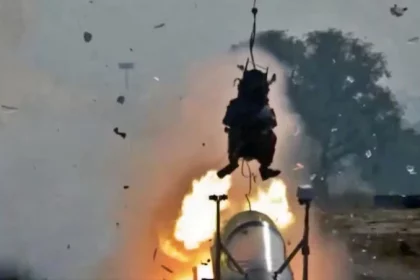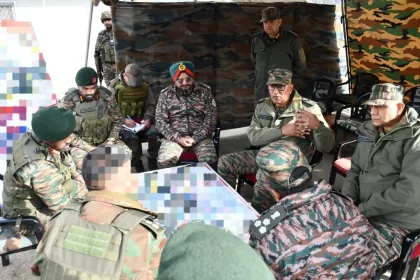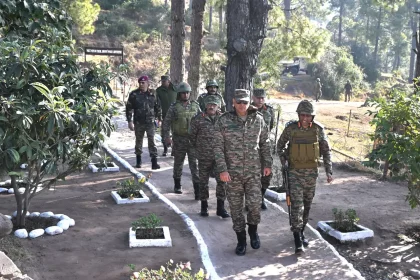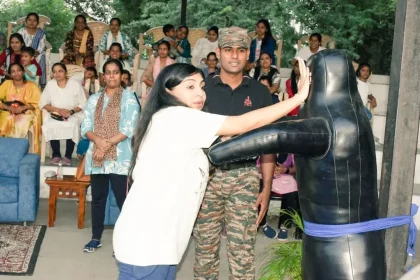DRDO Successfully Conducts High-Speed Rocket Sled Test of Fighter Aircraft Escape System
DRDO, ADA, HAL achieve milestone in indigenous aviation safety technology.
Lt Gen Pratik Sharma Reviews Counter-Terrorism Preparedness in Chhatru and Basantgarh
Northern Command chief reviews counter-terrorism readiness, commends troops’ dedication.
Lt Gen Prasanna Kishore Mishra Reviews Operational Preparedness Along LoC in Bhimber Gali Sector
White Knight Corps Chief reviews LoC readiness, stresses vigilance and operational excellence.
Lt Gen Dhiraj Seth Reviews Operational Readiness of Desert Sector Logistics Unit
Southern Command Chief reviews Desert Sector logistics, commends efforts to enhance operational readiness.
Major General Puneet Doval Appointed Commandant of High Altitude Warfare School, Gulmarg
Seasoned officer Maj Gen Puneet Doval takes command of HAWS to bolster India’s mountain warfare readiness.
Sindh Vijeta Brigade Conducts Women Safety & Self-Defence Workshop at Jamnagar
Workshop equips women with vital self-defence skills and safety awareness.






